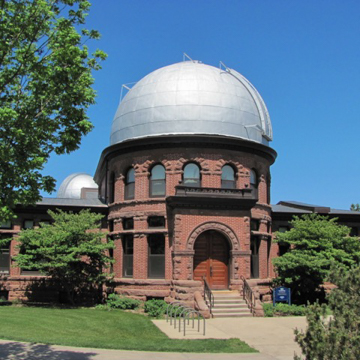For many years Goodsell Observatory served as one of the most sophisticated teaching and research observatories in the Upper Midwest. Built in 1887 at Carleton College, it cost the then significant sum of $50,000. New Yorker Harvey Ellis designed the observatory and partnered with St. Paul architect J. Walter Stevens in its construction.
Built of brick and brownstone, Goodsell Observatory is exemplary of a small Romanesque Revival structure, with its round-arched door and window openings and smooth brick wall surfaces. The high dome—the building’s most prominent feature—houses two historic telescopes that continue to be used on a regular basis by Carleton College students and the Northfield community. The observatory was named for Charles Goodsell, who donated the ten acres of property that became the historic core of the Carleton campus.
Goodsell Observatory replaced an earlier 1877 wooden observatory structure that was eventually demolished in 1905 to make room for Laird Hall. The old observatory was too small and lacked the facilities necessary to serve the college’s growing mathematics and astronomy departments.
At the time of its construction, Goodsell Observatory was the largest observatory in Minnesota and was featured in American Architecture and Building News. From the late nineteenth century until the end of World War II, Goodsell Observatory kept time for every major railroad west of the Mississippi River. It also served as the model for the Chamberlain Observatory at the University of Denver.
References
Brady, Tim, and McGrady, Kayla. “Putting Carleton on the Celestial Map.” Carleton College Voice(Winter 2016): 10-17.
Headley, Leal A., and Jarchow, Merrill E. Carleton: The First Century.Northfield, MN: Carleton College, 1966.






